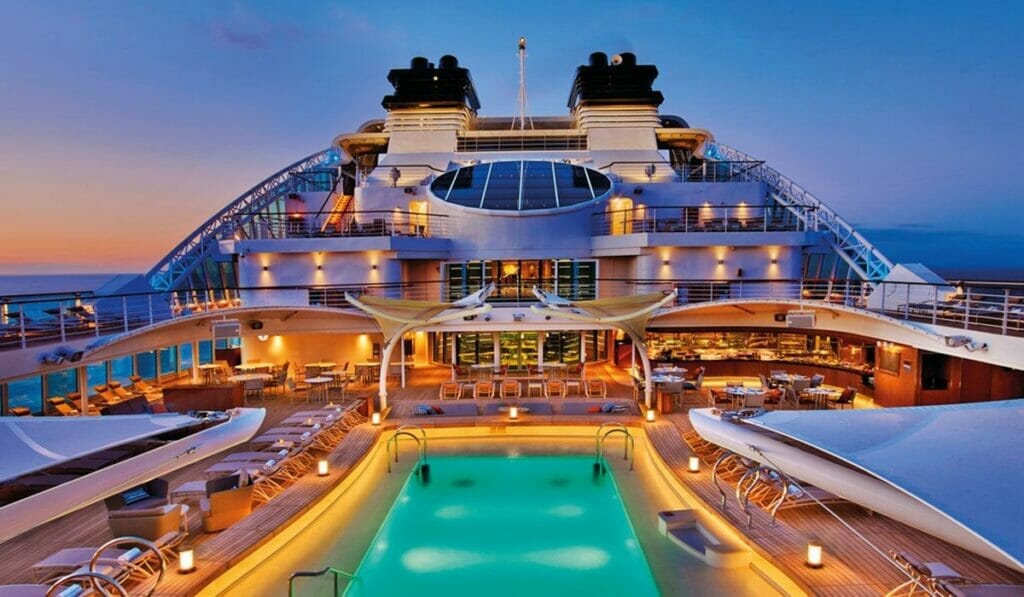We live in an age where we rush from one city to another. Invariably, we take a plane, a process that involves crowded airports, treks through long corridors and stressful encounters with increasingly irritated border officials.
Is it any wonder then that cruise liners – especially those operating in the luxury segment of small to medium-sized vessels – are finding themselves in the midst of a nautical boom?
In Asia especially, the statistics are telling. According to Asia Cruise Trends, cruise tourism is growing in double digits, while the absolute volume of cruise travellers from Asia has nearly doubled since 2012 to around 1.5 million passengers. In 2015, Singapore’s cruise sector recorded a 14 per cent annual growth in passenger throughput.

NIMBLE EXPLORATION Amandira plies Indonesian waters.
“Today’s luxury traveller is looking for a more enriching experience as they see the world,†says Chris Austin, senior vice-president of global marketing and sales of the Seattle-based Seabourn group, which is expanding aggressively in the Asian market, with itineraries through the Indonesian and Philippines archipelagos, India, and South China Sea. “Our research shows the global luxury travel market is slated to grow at a rate that is higher than the travel market as a whole.â€
And why not? Why deal with crowded cities, pushy hoards of tourists and bad traffic when you could, for instance, be on the 20-suite Aqua Mekong, where the staff to guest ratio is one to one, you’re accompanied by a fleet of four private tenders for solitary excursions to fishing villages, and your meals are overseen by Michelin-star chef David Thompson?

A cruise aboard the Amandira is a ticket to nature’s paradise.
Or when you could be posting on Instagram a picture of your breakfast against the backdrop of Vietnam’s Halong Bay, or Indonesia’s Anak Krakatoa volcano on the refurbished 36-room Coral Discoverer? Or being flat on your back watching a blazing blanket of stars from the top deck of the Amandira – a five-cabin, two-masted 52m Phinisi that plies the Komodo archipelago and the crystalline waters of Raja Ampat?
Indeed, the attraction of smaller boats has another dimension besides fewer guests, better food, more intimate jaunts led by experts, and more service attention: Their size enables them to venture deeper into narrower waterways and destinations that would be denied to behemoths. Scenic spots like the Douro in Portugal or remote Cambodian waterways which usually involve complicated logistics by land, sea and air, are now readily accessible.

ASIA ENTRY The Seabourn Encore covers Japan, China, South Korea and Taiwan.
Mario Ferreira, CEO of the Portugal-based Douro Azul group whose new generation of 63-room ships features streamlined silhouettes that recall a large yacht and a staff to passenger ratio of three to one, makes the point that “the international demand for river cruises has been increasing steadily in the last years. The focus is on a younger audience, than the (older demographic) that traditionally seeks out river cruisesâ€.
In Asia, at least, the relative accessibility to smaller ports and destinations is introducing literally new vistas to a whole new generation of seafaring travellers, not the least of which are a younger, more cashed-up corps of retirees, and a more mobile senior workforce who can stay connected to the office and finesse the spreadsheets, while nursing a Negroni by the pool.

NEW MARKET River cruising has become popular with younger travellers.
“There is a huge future for marine tourism in Indonesia,†says Ian White, Aman’s regional director for Indonesia. “The region has some of the world’s most incredible dive sites – many of which are in vastly remote locations that are accessible only via boat.â€
Francesco Galli Zugaro, the founder and CEO of Aqua Expeditions, is equally bullish about the market. Next year, he is adding two vessels to the existing haul of all-suite small ships that ply the Amazon and the Mekong. “River cruisers are the fastest-growing segment today,†he says. “Our multi-generational clientele want authentic adventures but they don’t want to sacrifice their creature comforts, nor do they want the crowds.â€
The bigger players are also muscling into the Asian market. The Seabourn group, for instance, is anchored by a fleet of sleek white ships whose room-counts are capped at just 300. Late last year, it launched Seabourn Encore, which offers capacious suites with balconies alongside a range of itineraries, including a 36-day tour that takes in Japan, China, South Korea and Taiwan.
And, despite 13 levels and a full sailing capacity of 600 passengers, there is no sense of the madding crowd, thanks to a judicious spread of venues that disperses passengers across two swimming pools, library, casino, seven lounges and bars, and at least six dining options, one of which is The Grill by Thomas Keller.
We, for one, are all on board for this kind of cruise control.


